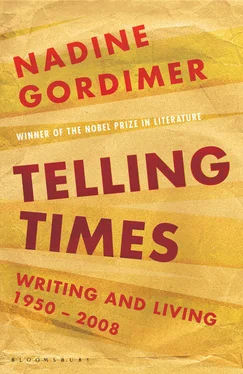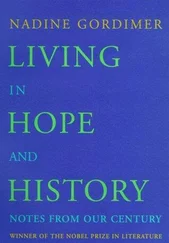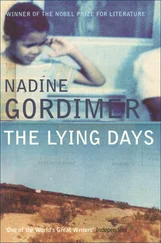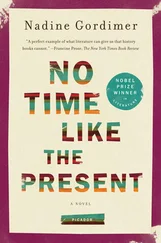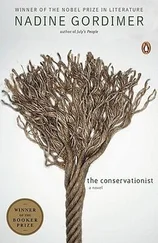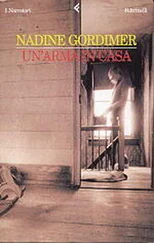This is a grave matter; wonderful. Perhaps dangerous. For there are those among us whose epiphany comes not from the faiths of religion, philosophy or politics, but the illumination of the subterranean passages of life by the imaginative writer.
I was at quite an advanced age — late teens — for one who had lived in books since early childhood, when long after Tolstoy, Dostoevsky, Balzac, Flaubert, I came upon that mistitled Remembrance of Things Past in the Modern Library edition of the Scott Moncrieff translation. I had survived a lonely mother-love-dominated childhood and so my first response was one of recognition; here was a writer who understood that childhood better than I did myself: an identification. But later as I read and returned to that book its effect was something different, exegetical, prophetic to the series of presents, existential stages I was coming to, passing through.
Holed up in an armchair in the tin-roofed house of a mining town in the South African veld, far, far in every way from the Méséglise Way, Swann’s Way, Combray, Balbec and the Boulevard Haussmann, I discovered that the intense response I had to natural beauty, to flowers, trees, and the sea visited once a year, was not something high-mindedly removed from the drives of existence I was struggling with, but part of a sensuality which informs, belongs with awakening sexuality, the conflation of emotional and aesthetic formation. Every time, any time, one turns back to The Novel one finds the delight of something relevant to a past perception that one had missed before … For example, in my recent re-reading of À la Recherche du Temps Perdu (my third in French) I have seen how pollen recurs, the natural product become a metaphor — the wind-distributed fecundity part of the very air we breathe — first coming from the regard of the girl the narrator follows with his eyes on the drive with Madame de Villeparisis in A L’ Ombre des Jeunes Filles en Fleurs . And then there’s the bumblebee that enters the courtyard with pollen that signifies the attraction cast in the air between noble Baron de Charlus and the lowly waistcoat-maker, Jupien. Proust himself pollinates ineffable connections between needs and emotions aroused by various means, in us.
In the context of projected existence, I came to Proust from D. H. Lawrence and Blake; sexuality was fulfilment guaranteed to the bold, anyone who would flout interdictions and free desire: ‘Abstinence sows sand all over/The ruddy limbs and flaming hair,/ But Desire Gratified/Plants fruits of life and beauty there.’ 103And this gratification between men and women was the image of Fred Astaire and Ginger Rogers dancing on simulated clouds — like Italo Calvino, I had formed my notion of future emotional life as innocently, lyingly portrayed by movies of the time. The processes of loving, as exemplified in the desperate pilgrimage of Swann — what a Way that is, ecstatic, frustrating, impossible to turn away from, viewing the pursued beloved from the terrible angles of suspicion, losing the will to continue, grabbed by the will to go on; always, moving along with him, one has moments when one wants to shake him: stop! And sees he cannot, will not. Maybe that’s the principle of love … And in the end, that devastating conclusion: this woman, for whom he has spoiled years of his life, was really not his type at all.
Proust reformed, informed my youthful understanding of the expectations of sexual love, showed me its immense complexity, its ultimate dependency on the impossibility of knowing the loved one — the very defeat of possession — and the concomitant process of self-knowledge, often dismaying.
The cloud-mating of Fred and Ginger dispersed for ever. In the life of the emotions I was embarked upon my expectations were tutored by the greatest exploration ever made of the divine mystery of the sexual life in its ambient world of sensuality. No time to discuss the continuation of the theme with Albertine; only to observe that not only does it not matter a damn if an Albertine was really an Albert transformed by the alchemy of imagination rather than a sex-change operation — himself a homosexual, no one has written better than Marcel Proust of heterosexual relations. Perhaps literary genius can be defined yet once again: as a creativity that is all things, knows everything, in every human.
After early readings of The Book I read, of course, Les Plaisirs et Les Jours, Jean Santeuil, Contre Sainte-Beuve , but to these I have not returned. Like all of us, I have more or less the gamut of Proust scholarship in English and French. But all have been surpassed, for me, by the publication this year of Roger Shattuck’s Proust’s Way , an amazing feat of originality where one would have thought that all the gold-bearing ore had long been brought to the surface. My present reading of The Book has become a new one, filled with new understanding, possibilities, and new joys, through the variety of lenses provided by Roger Shattuck’s radiant vision.
Marcel Proust is a writer with whom one moves along, for life; reading and re-reading without ever exhausting the sources he reveals only when one is ready for, or made ready for them. At the grand and poignant final social-gathering-of-all-social-gatherings narrator/Marcel finds past friends and acquaintances unrecognisably changed by age, while still having the sense of himself as he had been back in his mother’s eyes. He replies to a young woman’s invitation to dine: ‘With pleasure, if you don’t mind dining alone with a young man’ and only when he hears people giggle, adds hastily ‘or rather an old one’. Later he realises that the span of time represented by the aspect of the gathering not only had been lived through but was his life, presented to him.
As I grow old I find myself ready for the revelation, Time Regained, of this Proustian source when, among old friends with whom I was always the youngest of the circle, I realise we are, now, all alike, disguised in the garb of ageing. I, like everyone else, have to be introduced — to myself. Proust makes it another epiphany.
2000
Africa’s Plague, and Everyone’s
Sixty-nine per cent of the world’s victims of HIV and Aids are in sub-Saharan Africa. This figure is not easy to take in. Aids seems to have come upon everyone while we were looking the other way: it happened to some sex or colour other than our own; it was endemic to some other country.
In South Africa it was quite some time before the realisation that the disease was not the unfortunate problem of our poorer neighbouring countries, but was our own. Now, out of South Africa’s 43 million people, about 4 million have been infected by HIV and a further 1,700 are infected daily. Recently, in a Johannesburg home caring for orphaned or abandoned babies born with Aids, there was a service in memory of forty who had died there not long before. While South Africa is the most highly developed country on the African continent, we are faced with this kind of future for the generations to come.
But every community, every affected country, has to decide how to approach what is no longer a problem but a catastrophe. There is prevention, and there is cure. The ideal is to seek both at once, but this is beyond the capacity of most countries where the disease is rampant. Cure, and prevention by inoculation, are not within the capacity of lay people; these are in the hands of medical science, which implies money to be provided to advance research. Immediate prevention is in the hands and initiative of each population itself. I believe we cannot emphasise bluntly enough that the cure and vaccine development depend on money. And until recently, the country that has the money, the United States, perhaps inevitably has concentrated on a vaccine for a subtype of Aids prevalent in the Northern Hemisphere. It was only at the World Economic Forum’s meeting this year that President Clinton announced that large-scale aid for vaccine development would be forthcoming from the United States. Only now has the International Aids Vaccine Initiative announced a third international development project, based on those subtypes of the virus most prevalent in the direly affected regions of Southern and East Africa, the subtypes C and A. It is encouraging that the project is being pursued in wide collaboration among researchers of the United States, South Africa, Kenya and Oxford University, and that the philosophy of the initiative is that of ‘social venture capital’, meaning that in return for financing, it has secured rights to ensure that a successful vaccine, when it is achieved, will be distributed in developing countries ‘at a reasonable price’. The formation of an International Partnership Against HIV/Aids in Africa is to be welcomed as extremely important in the same context.
Читать дальше
